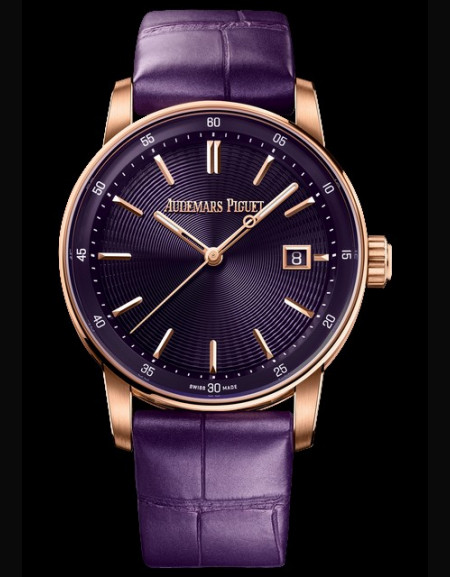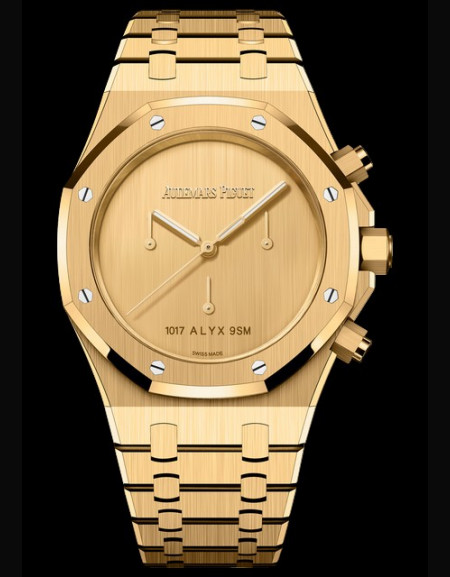
|
||
Audemars Piguet history
1875-1882: In 1875, two young men with a passion for Fine Watchmaking, Jules-Louis Audemars (1851-1918) and Edward-Auguste Piguet (1853-1919), join forces to design and produce complication watches in the Joux Calley. Audemars designs the movements, while Piguet handles the financial and commercial side. The history of Audemars Piguet Manufacture is deeply rooted in the region, the cradle of Fine Watchmaking.

MY WATCHSITE CHOICE

-
Royal Oak Automatique
SEE THE DATA SHEETBrand: Audemars Piguet
Collection: Royal Oak
Ref: 15450ST.OO.1256ST.01
Price: 16 300 € -
Tourbillon Royal Oak...
SEE THE DATA SHEETBrand: Audemars Piguet
Collection: Royal Oak
Ref: RO 26580IO OO D010CA SDT
Price: 213 200 € -
Chronographe Royal Oak...
SEE THE DATA SHEETBrand: Audemars Piguet
Collection: Royal Oak Offshore
Ref: 26210OR.OO.A109CR.01
Price: ON REQUEST -
Royal Oak Automatique
SEE THE DATA SHEETBrand: Audemars Piguet
Collection: Royal Oak
Ref: 15400OR.OO.D002CR.01
Price: 31 500 €

THE COLLECTIONS

-
Royal Oak Offshore...
SEE THE DATA SHEETBrand: Audemars Piguet
Collection: Royal Oak Offshore
Ref: 26238CE.OO.1300CE.02
Price: 86 600 € -
Royal Oak Offshore...
SEE THE DATA SHEETBrand: Audemars Piguet
Collection: Royal Oak Offshore
Ref: 26420CE.OO.A063VE.01
Price: 58 200 € -
Royal Oak Perpetual...
SEE THE DATA SHEETBrand: Audemars Piguet
Collection: Royal Oak
Ref: 26585XT.OO.1220XT.01
Price: ON REQUEST -
Code 11.59 By Audemars...
SEE THE DATA SHEETBrand: Audemars Piguet
Collection: Code 11.59
Ref: 226665SG.ZZ.D209CR.01
Price: ON REQUEST -
Royal Oak Selfwinding...
SEE THE DATA SHEETBrand: Audemars Piguet
Collection: Royal Oak
Ref: 26674SG.OO.1320SG.01
Price: ON REQUEST -
Royal Oak Selfwinding...
SEE THE DATA SHEETBrand: Audemars Piguet
Collection: Royal Oak
Ref: 26674ST.OO.1320ST.01
Price: 108 900 € -
Code 11.59 by Audemars...
SEE THE DATA SHEETBrand: Audemars Piguet
Collection: Code 11.59
Ref: 26494BC.OO.D350KB.01
Price: 108 900 € -
Royal Oak Concept...
SEE THE DATA SHEETBrand: Audemars Piguet
Collection: Royal Oak
Ref: 26656TI.GG.D019VE.01
Price: ON REQUEST -
Code 11.59 By Audemars...
SEE THE DATA SHEETBrand: Audemars Piguet
Collection: Code 11.59
Ref: 26399NB.OO.D009KB.01
Price: ON REQUEST -
Royal Oak Offshore...
SEE THE DATA SHEETBrand: Audemars Piguet
Collection: Royal Oak Offshore
Ref: 26420ST.OO.A828CR.01
Price: 41 500 € -
Royal Oak Offshore...
SEE THE DATA SHEETBrand: Audemars Piguet
Collection: Royal Oak Offshore
Ref: 15605SK.OO.A350CA.01
Price: 27 300 € -
Royal Oak Offshore...
SEE THE DATA SHEETBrand: Audemars Piguet
Collection: Royal Oak Offshore
Ref: 77605OK.OOA101CA.01
Price: ON REQUEST -
Code 11.59 by Audemars...
SEE THE DATA SHEETBrand: Audemars Piguet
Collection: Code 11.59
Ref: 15210OR.OO.A348KB.01
Price: 33 500 € -
[RE]Master02 Selfwinding
SEE THE DATA SHEETBrand: Audemars Piguet
Collection: [Re]Master02
Ref: 15240SG.OO.A347CR.01
Price: 47 100 € -
Audemars Piguet Royal Oak...
SEE THE DATA SHEETBrand: Audemars Piguet
Collection: Royal Oak
Ref: 26735SG
Price: ON REQUEST -
Royal Oak “Jumbo”...
SEE THE DATA SHEETBrand: Audemars Piguet
Collection: Royal Oak
Ref: 16204BA-OO-1240BA.01
Price: ON REQUEST -
Code 11.59 by Audemars...
SEE THE DATA SHEETBrand: Audemars Piguet
Collection: Royal Oak
Ref: 77410OR.OO.A623CR.01
Price: 34 100 € -
Code 11.59 by Audemars...
SEE THE DATA SHEETBrand: Audemars Piguet
Collection: Royal Oak
Ref: 77410OR.OO.A825CR.01
Price: 34 100 € -
Royal Oak Offshore...
SEE THE DATA SHEETBrand: Audemars Piguet
Collection: Royal Oak
Ref: 26420OI.OO.A015VE.01
Price: 59 400 € -
Royal Oak Offshore...
SEE THE DATA SHEETBrand: Audemars Piguet
Collection: Royal Oak
Ref: 26420CE.OO.A043VE.01
Price: 59 400 € -
Royal Oak “Jumbo” Extra-Thin
SEE THE DATA SHEETBrand: Audemars Piguet
Collection: Royal Oak
Ref: 16202XT.OO.1240XT.01
Price: 99 000 € -
Royal Oak Selfwinding
SEE THE DATA SHEETBrand: Audemars Piguet
Collection: Royal Oak
Ref: 77350CB.OO.1266CB.01
Price: 54 500 € -
Royal Oak Selfwinding...
SEE THE DATA SHEETBrand: Audemars Piguet
Collection: Royal Oak
Ref: 26240SA.OO.1320SA.01
Price: ON REQUEST -
Royal Oak Offshore...
SEE THE DATA SHEETBrand: Audemars Piguet
Collection: Royal Oak Offshore
Ref: 26238BA.OO.2000BA.01
Price: 110 000 € -
Royal Oak Offshore...
SEE THE DATA SHEETBrand: Audemars Piguet
Collection: Royal Oak Offshore
Ref: 26238BC.OO.2000BC.01
Price: 110 000 € -
Royal Oak Selfwinding...
SEE THE DATA SHEETBrand: Audemars Piguet
Collection: Royal Oak
Ref: 26240BA.OO.1320BA.01
Price: 89 200 € -
Royal Oak Selfwinding...
SEE THE DATA SHEETBrand: Audemars Piguet
Collection: Royal Oak
Ref: 15550BA.OO.1356BA.02
Price: 72 600 € -
Collection Code 11.59 by...
SEE THE DATA SHEETBrand: Audemars Piguet
Collection: Code 11.59
Ref: 26398OR.OO.D002CR.01
Price: 1 980 000 € -
Collection Code 11.59 by...
SEE THE DATA SHEETBrand: Audemars Piguet
Collection: Code 11.59
Ref: 26398BC.OO.D002CR.02
Price: 1 980 000 € -
Collection Code 11.59 by...
SEE THE DATA SHEETBrand: Audemars Piguet
Collection: Code 11.59
Ref: 26398BC.OO.D002CR.01
Price: 1 800 000 € -
Collection Code 11.59 by...
SEE THE DATA SHEETBrand: Audemars Piguet
Collection: Code 11.59
Ref: 26398BC.OO.D002CR.04
Price: 1 800 000 € -
Royal Oak Concept...
SEE THE DATA SHEETBrand: Audemars Piguet
Collection: Royal Oak
Ref: 2663IO.OO.D002CA.01
Price: 235 000 €
Audemars Piguet history
1875-1882: In 1875, two young men with a passion for Fine Watchmaking, Jules-Louis Audemars (1851-1918) and Edward-Auguste Piguet (1853-1919), join forces to design and produce complication watches in the Joux Calley. Audemars designs the movements, while Piguet handles the financial and commercial side. The history of Audemars Piguet Manufacture is deeply rooted in the region, the cradle of Fine Watchmaking.
1972-1983: Audemars Piguet turns Watchmaking codes upside down, creating the Royal Oak, the first high-end sports watch made of steel, recognisable by its octagonal bezel with eight hexagonal screws, the guillochage on its dial and its integrated bracelet - a true revolution in the watchmaking world.The octagonal bezel and case back are joined by eight hexagonal screws on the bezel and eight visible bolts on the back.
On September 6, 1651, Cromwell's troops pursued Charles II, the future king of England, Scotland and Ireland, who took refuge in the branches of an oak tree. This tree, later know as the "Royal Oak", became a symbol of protection and power. Between 1769 and 1914, the British fleet christened four of its vessels the H.M.S. Royal Oak? The hull of one of them was reinforced with steel plates and the gun ports for its cannons were octagonal.
In 1992, the famous octagonal Royal Oak is reinterpreted in an extreme sport version: the Royal Oak Offshore collection is born. Bold and futuristic, this line offers watches with oversized cases and marries steel with rubber.
Audemars Piguet presents the first hand-wound movement with grand and small strike and two-tone quarter-hour repeater for use in a wristwatch.
Audemars Piguet celebrates its 125th anniversary by looking steadfastly to the future: a new building is opened in Le Bressus to house its workshops and its watchmakers create the Jules Audemars dynamograph, the first watch in the world to combine a three-tone carillon grand strike with a dynamograph. Forever fascinated by the nautical world, the Manufacture signs on with Be happy, the first Swiss challenger in the America's Cup, and creates the Royal Oak City of Sails.
Audemars Piguet's boutique in Bal Harbour, Miami, opens in 2006. This new product setting announces a number of other grand openings around the world.
On July 3, 2007, Alinghi defeats the challenger Emirates Team New Zealand 5 to 2 to win the 32nd America's Cup. Extremely proud to have participated in this second executive victory, the Manufacture Audemars Piguet pays tribute to the defender with the Royal Oak Offshore Alinghi Team Chronograph.






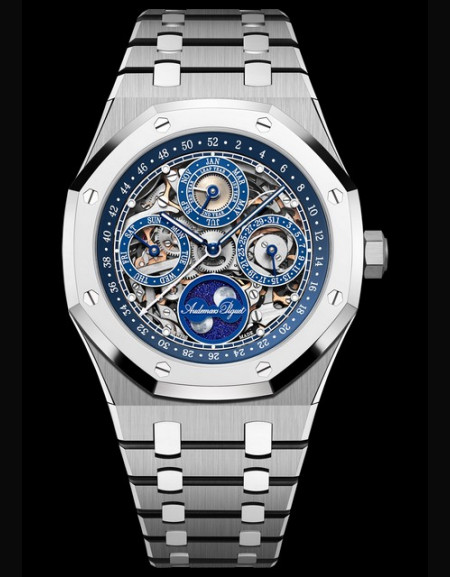

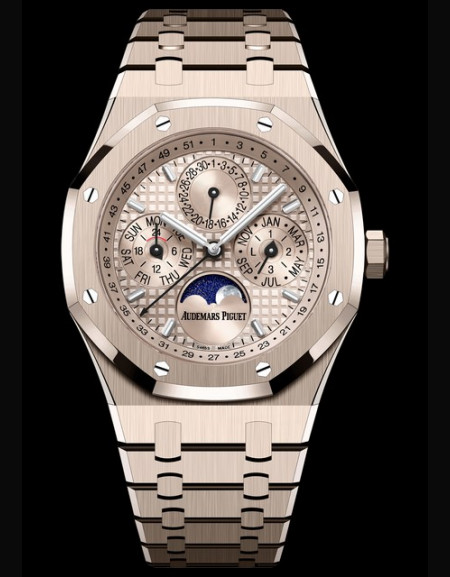






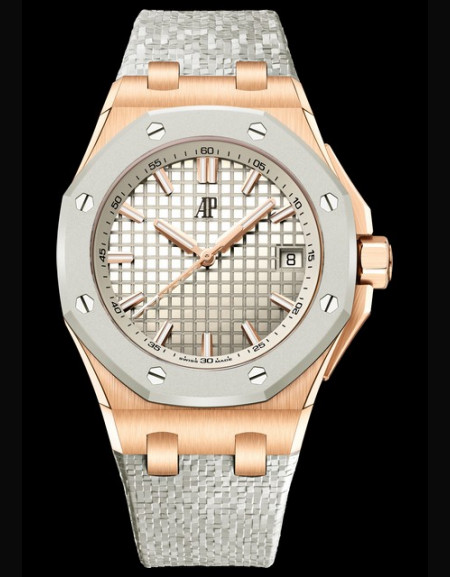

![[RE]Master02 Selfwinding [RE]Master02 Selfwinding](https://www.my-watchsite.com/45349-home_default/-re-master02-selfwinding.jpg)


